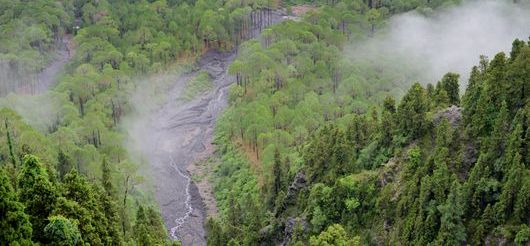Mainstreaming biodiversity in forestry
27 September 2022
27 September 2022
Forests are host to most of Earth’s terrestrial biodiversity. The conservation of the world’s biodiversity is thus utterly dependent on the way in which we interact with and use the world’s forests. The role of forests in maintaining biodiversity is also explicitly recognized by the United Nations Strategic Plan for...
Vast areas of the Maradi and Zinder regions of Niger were transformed from severely degraded farmland to agroforests through farmer-managed natural regeneration (FMNR). In the 1970s and 1980s, Maradi and Zinder faced an ecological crisis. Multiple droughts, rapid soil degradation, and famine left fuelwood, building materials, and fodder scarce, and...
Restoration cases flagship collection - Case #5: Restoring tallgrass prairie in Illinois, USA
15 March 2022
15 March 2022
The Nachusa Grasslands Preserve in north central Illinois, USA, is a large-scale, long-term, high-quality restoration effort coordinated by The Nature Conservancy. Since 1986, crew members, volunteers, researchers, and staff have collaborated to reconnect remnant patches of tallgrass prairie, woodland savanna, and wetland ecosystems at Nachusa Grasslands, creating one of the...
The Lebanese government initiated an extensive forest and landscape restoration (FLR) project in the Shouf Biosphere Reserve (SBR), Lebanon. The SBR spans ~50,000 ha of mountainous topography along the Mount Lebanon range. Home to a quarter of Lebanon’s remaining cedar forests, it is highly diverse with a mosaic of different...
In 1997, Chiang-Mai University’s Forest Restoration Research Unit (FORRU-CMU) joined forces with Hmong villagers to reforest degraded areas in Doi Suthep-Pui National Park. Experimental forest restoration plots were established annually over 16 years using the framework species method. FORRU-CMU funded the construction of a community tree nursery in the village...
Instituto Terra implements forest restoration on Fazenda Bulcão, a former cattle ranch, and in surrounding areas of the Rio Doce Watershed in the municipality of Aimorés in Minas Gerais. After creating the “Private Reserve of Natural Heritage –RPPN”, planting of native tree seedlings, assisted natural regeneration, and later enrichment planting...
Restoration cases flagship collection - Case #1: Community-led watershed restoration in Intag Valley, Ecuador
14 March 2022
14 March 2022
In one decade, farmers in the Intag Valley in Ecuador went from clearing to conserving and restoring forests. Intag’s dense cloud forests were cleared rapidly in the 1970s and ‘80s for agriculture and ranching. Soon after, landholders experienced severe declines in water quality, seasonal droughts, and declining soil fertility. The...
A total of 17 landscapes in nine countries with Bonn Challenge commitments (three each in Africa, Asia and Latin America) were analysed as “snapshots” of FLR implementation. Following a common methodology developed by the IUFRO Team, local forest scientists selected landscapes with past and ongoing restoration activities. Local teams collected...
Forest landscape restoration: start with local priorities (Peru)
04 December 2020
04 December 2020
This session titled "Ask the Locals" features local scientists in interview, illustrating nine lessons learnt in FLR implementation with real-life examples of achievements, challenges, and experiences in forest landscape restoration implementation. Each lesson could be applicable to any FLR initiative, but is brought to life with the example of a...
This session titled "Ask the Locals" features local scientists in interview, illustrating nine lessons learnt in FLR implementation with real-life examples of achievements, challenges, and experiences in forest landscape restoration implementation. Each lesson could be applicable to any FLR initiative, but is brought to life with the example of a...

